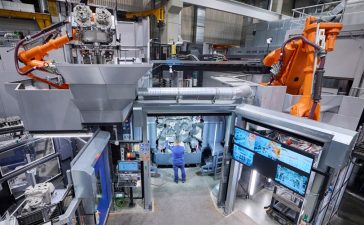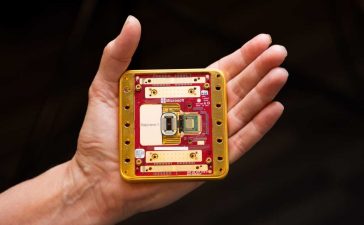
Summary: Nimbus 3, a significant forerunner in the alignment of satellites for meteorological research, marked its place in history back in 1969. It elevated weather prediction through its then-novel instruments. Despite operational hiccups that cut its mission short, its contributions underpin today’s advanced atmospheric monitoring techniques.
As NASA’s Nimbus 3 satellite was propelled into the sky by a Thor-Agena rocket in April 1969, it ushered in a new era for weather forecasting and atmospheric science. This second-generation satellite was equipped with technology that could map atmospheric temperatures and track cloud movements globally—capabilities that revolutionized meteorologists’ approach to weather prediction.
Although Nimbus 3’s mission was marred by mechanical failures two months post-launch, leading to an early end in 1972, the impact of its brief journey cannot be overstated. The information gathered during its operation was invaluable, offering insights that significantly influenced modern weather forecasting techniques.
Since the inception of Nimbus 3, the demand for sophisticated weather satellites has surged. These high-tech sentinels play a vital role in agriculture, disaster management, aviation, and more. Their importance has become so pronounced that the market is forecasted for continued growth, driven by the need for advanced weather data collection and analysis tools.
Despite promising advancements, this sector faces significant challenges. The costliness of satellite launches, risks of orbital debris, and the imperative of cybersecurity loom large, mirroring the diverse hurdles that Nimbus 3 itself encountered. However, maintaining its pioneering spirit, the meteorological community remains committed to overcoming these obstacles, striving to sustainably manage our celestial assets for a better understanding of Earth’s dynamic atmosphere.
For further information on this industrious field, organizations such as NASA, NOAA, EUMETSAT, and WMO are excellent resources. They are dedicated to the continuous monitoring and improvement of meteorological research and technology, ensuring that we build on the foundational achievements of monumental endeavors like the Nimbus 3 mission.
An Evolutionary Step in Meteorological Satellites
The launch of NASA’s Nimbus 3 satellite in April 1969 represented a significant leap forward in the field of meteorology. It equipped scientists with enhanced capabilities to analyze weather patterns, thus improving weather predictions. The advancements in technology during that period, as seen on Nimbus 3, included the ability to gather detailed measurements of atmospheric temperatures and meticulously track cloud movements on a global scale. These breakthroughs facilitated the accuracy and reliability of weather forecasting that we often take for granted today.
Impact and Legacy
Despite Nimbus 3’s technological triumphs, its time in service was cut short due to mechanical issues that arose only two months after commencement. Although its operational life ended prematurely in 1972, the legacy of Nimbus 3 is enduring. The satellite’s contribution to meteorology has been foundational, laying the groundwork for the complex atmospheric monitoring systems currently in place.
Industry Growth and Forecast
The advent of Nimbus 3 marked just the beginning of what has become an industry of critical importance. The global reliance on accurate weather information has only grown with time, evidenced by the expanding market for meteorological satellites. These satellites are indispensable in various sectors, including agriculture, disaster response, and aviation, providing essential data for both immediate weather events and climate trend analysis. Forecasts for the satellite meteorology market remain optimistic, with predictions of continued expansion as technology advances and the demand for comprehensive weather data persists.
Challenges in the Sector
Yet, the industry must confront formidable challenges ranging from the high costs associated with launching and maintaining satellite constellations to addressing space debris which poses risks to orbital operations. Additionally, in an era where cyber threats are abundant, securing these assets against digital intrusions is critical.
For those interested in exploring more about the meteorological satellite industry and its offerings, reputable resources and organizations are at the forefront. NASA, the National Oceanic and Atmospheric Administration (NOAA), the European Organisation for the Exploitation of Meteorological Satellites (EUMETSAT), and the World Meteorological Organization (WMO) are key players. Their work not only contributes to ongoing research but also ensures enhancements are continuously being made to meteorological technologies. As inheritors of the Nimbus 3 mission’s breakthroughs, these organizations seek to uphold the satellite’s pioneering spirit by advancing our understanding of the vast, dynamic atmosphere of our planet.

Jerzy Lewandowski, a visionary in the realm of virtual reality and augmented reality technologies, has made significant contributions to the field with his pioneering research and innovative designs. His work primarily focuses on enhancing user experience and interaction within virtual environments, pushing the boundaries of immersive technology. Lewandowski’s groundbreaking projects have gained recognition for their ability to merge the digital and physical worlds, offering new possibilities in gaming, education, and professional training. His expertise and forward-thinking approach mark him as a key influencer in shaping the future of virtual and augmented reality applications.












